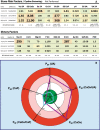Urine and stone analysis for the investigation of the renal stone former: a consensus conference
- PMID: 33048172
- PMCID: PMC7867533
- DOI: 10.1007/s00240-020-01217-3
Urine and stone analysis for the investigation of the renal stone former: a consensus conference
Abstract
The Consensus Group deliberated on a number of questions concerning urine and stone analysis over a period of months, and then met to develop consensus. The Group concluded that analyses of urine and stones should be routine in the diagnosis and treatment of urinary stone diseases. At present, the 24-h urine is the most useful type of urine collection, and accepted methods for analysis are described. Patient education is also important for obtaining a proper urine sample. Graphical methods for reporting urine analysis results can be helpful both for the physician and for educating the patient as to proper dietary changes that could be beneficial. Proper analysis of stones is also essential for diagnosis and management of patients. The Consensus Group also agreed that research has shown that evaluation of urinary crystals could be very valuable, but the Group also recognizes that existing methods for assessment of crystalluria do not allow this to be part of stone treatment in many places.
Keywords: Crystalluria; Nephrolithiasis; Stone analysis; Urine analysis.
Conflict of interest statement
J. Asplin is an employee of Labcorp/Litholink; and D.S. Goldfarb is owner and patent holder with Dr. Arnie’s, Inc., and is a consultant/researcher with Alnylam, Retrophin, Synlogic, and Dicerna. All other authors declare no conflict of interest.
Figures

Comment in
-
"Trust my morphology", the key message from a kidney stone.Urolithiasis. 2021 Oct;49(5):493-494. doi: 10.1007/s00240-021-01280-4. Epub 2021 Jul 23. Urolithiasis. 2021. PMID: 34297156 Free PMC article. No abstract available.
References
-
- Türk C, Neisius A, Petrik A, Seitz C, Skolarikos A, Thomas K. EAU Guidelines on urolithiasis. Arnhem: EAU Guidelines Office; 2018.
-
- Pearle MS, Goldfarb DS, Assimos DG, Curhan G, Denu-Ciocca CJ, Matlaga BR, Monga M, Penniston KL, Preminger GM, Turk TM, White JR. Medical management of kidney stones: AUA guideline. J Urol. 2014;192:316–324. - PubMed
-
- Taguchi K, Cho SY, Ng AC, Usawachintachit M, Tan YK, Deng YL, Shen CH, Gyawali P, Alenezi H, Basiri A, Bou S, Djojodemedjo T, Sarica K, Shi L, Singam P, Singh SK, Yasui T. The Urological Association of Asia clinical guideline for urinary stone disease. Int J Urol. 2019;26(7):688–709. - PubMed
Publication types
MeSH terms
Substances
Grants and funding
LinkOut - more resources
Full Text Sources
Medical
Miscellaneous

